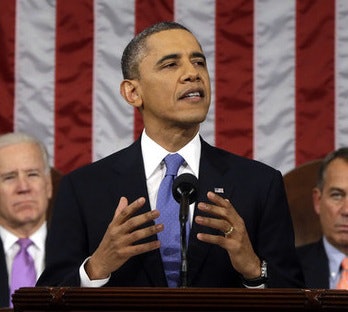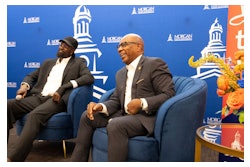 In the wake of Tuesday’s State of the Union address, the Obama administration released a web-based resource to help students evaluate options.
In the wake of Tuesday’s State of the Union address, the Obama administration released a web-based resource to help students evaluate options.The national movement to make higher education institutions more transparent in terms of their comparative costs and student outcomes got a lift from the Obama administration with the launch of the web-based College Scorecard resource tool on Wednesday.
President Obama, during the State of the Union address on Tuesday, announced the “new College Scorecard” as a web resource “that parents and students can use to compare schools based on a simple criteria—where you can get the most bang for your educational buck.” As a feature in the College Affordability and Transparency Center section, the College Scorecard is accessible through the White House website.
“Through tax credits, grants and better loans, we’ve made college more affordable for millions of students and families over the last few years. But taxpayers can’t keep on subsidizing higher and higher and higher costs for higher education,” Obama said. “Colleges must do their part to keep costs down, and it’s our job to make sure that they do.”
The interactive website provides information on how much the average student pays and borrows to attend his or her school. Users can check institutions’ six-year graduation rates and loan default rates. They can also “choose among any number of options based on their individual needs—including location, size, campus setting, and degree and major programs.”
The U.S. Education Department reports that the data will be updated periodically and that the department also plans to publish details on employment and average earnings in the coming year.
“The College Scorecard—as part of President Obama’s continued efforts to hold colleges accountable for cost, value and quality—highlights key indicators about the cost and value of institutions across the country to help students choose a school that is well-suited to meet their needs, priced affordably, and is consistent with their educational and career goals,” U.S. Education Department Secretary Arne Duncan said in a statement.
Higher education leaders and experts largely welcomed College Scorecard as a step in the right direction for helping students and their families obtain valuable college decision information.
“This is a win for students. Students need more information; they need better information if they’re going to be able to make good choices and make a wise investment about postsecondary opportunities available to them,” said Dr. Jennifer Engle, vice president for policy research at the Institute for Higher Education Policy (IHEP).
Dr. Stephen Rose, a research professor and senior economist at the Georgetown University Center on Education and the Workforce (CEW), said it’s critical that students “read published data on earnings by major … to show that what you take in school matters.” CEW research has positioned the center and its researchers as “strong advocates of getting more people to obtain postsecondary education” because it’s believed “the economy in the future” means “virtually everyone is going to need” some, according to Rose.
“There’s certainly a lot of pressure now and there’s certainly a lot of discussion about increasing the productivity of higher education,” Rose says. “I think more information is going to put pressure on schools to try to serve their students effectively.”
As president of College Measures, the Maryland-based research group behind the collegemeasures.org website, Dr. Mark Schneider has been leading an effort to turn state and other data about higher education outcomes into publicly available information. The website has recently published higher education outcomes and salary reports about graduates of Virginia and Tennessee colleges and universities.
Schneider, while pleased the Obama administration is pushing for greater higher education transparency, said the College Scorecard’s web design proved disappointing because, among a number of things, it greatly complicates the search for comparative information among institutions. “There are much better ways of organizing this search process,” he said.
“This [design] is not what I would hope for. I don’t think it’s consumer friendly. They could and should have done much better,” Schneider says.


















